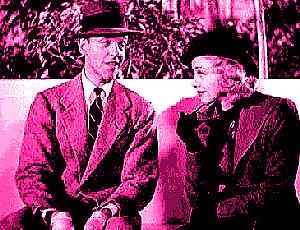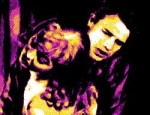Film Review
Shall We Dance marked the
beginning of the decline of the fortunes for one of Hollywood's most
successful double acts. Fred Astaire and Ginger Rogers had worked
box office magic in their previous six films together, providing the
perfect antidote to the Depression blues. But now audiences were
looking for something fresh and the Astaire-Rogers formula was
beginning to look distinctly
passé.
It didn't help that their studio, RKO, were running out of ideas with
what to do with them and were content to recycle story ideas from their
previous films.
Despite having a considerably larger budget than all of the previous
Astaire-Rogers films,
Shall We Dance
is pretty weak compared with their earlier offerings, notably
Top
Hat (1935) and
Swing Time (1936). The
ludicrously convoluted plot is partly to blame but there is also a
noticeable dearth of song and dance routines to rival what we find in
previous Fred and Ginger films. This film appears to be dogged by
complacency and lack of ambition, and even the large set piece dance
routines appear soulless and mechanical compared with the mind-blowing
extravaganzas that we find in, say,
The Gay Divorcee (1934) and
Swing Time.
Not vintage Fred and Ginger then, but
Shall
We Dance is still entertaining enough, if only for the jaunty
songs provided by the Gerswins. These include the hit
Let's Call the Whole Thing Off,
which the stars inexplicably end up performing on roller skates.
The ballet routines are also well choreographed but feel inappropriate
for an Astaire-Rogers film. With a bit more energy and
inspiration, and a lot less plot,
Shall
We Dance could have been another classic.
© James Travers 2009
The above content is owned by frenchfilms.org and must not be copied.
Film Synopsis
Pete Peters is a renowned ballet star, better known by his soubriquet
Petrov. Whilst performing in Paris, he hears about the
popular American dancer Linda Keene and resolves to see her.
Tired of well-wishers, Miss Keene gives him the brush off, but Pete
Peters is not a man who is easily dissuaded. Hearing that the
dancer is heading back to America on an ocean liner, Pete persuades his
impresario, Jeffrey Baird, to book him a cabin on the same ship.
To free himself from the attentions of another female admirer, Pete
hints that he is already married and within no time the whole world
believes that he and Miss Keene are husband and wife...
© James Travers
The above content is owned by frenchfilms.org and must not be copied.


